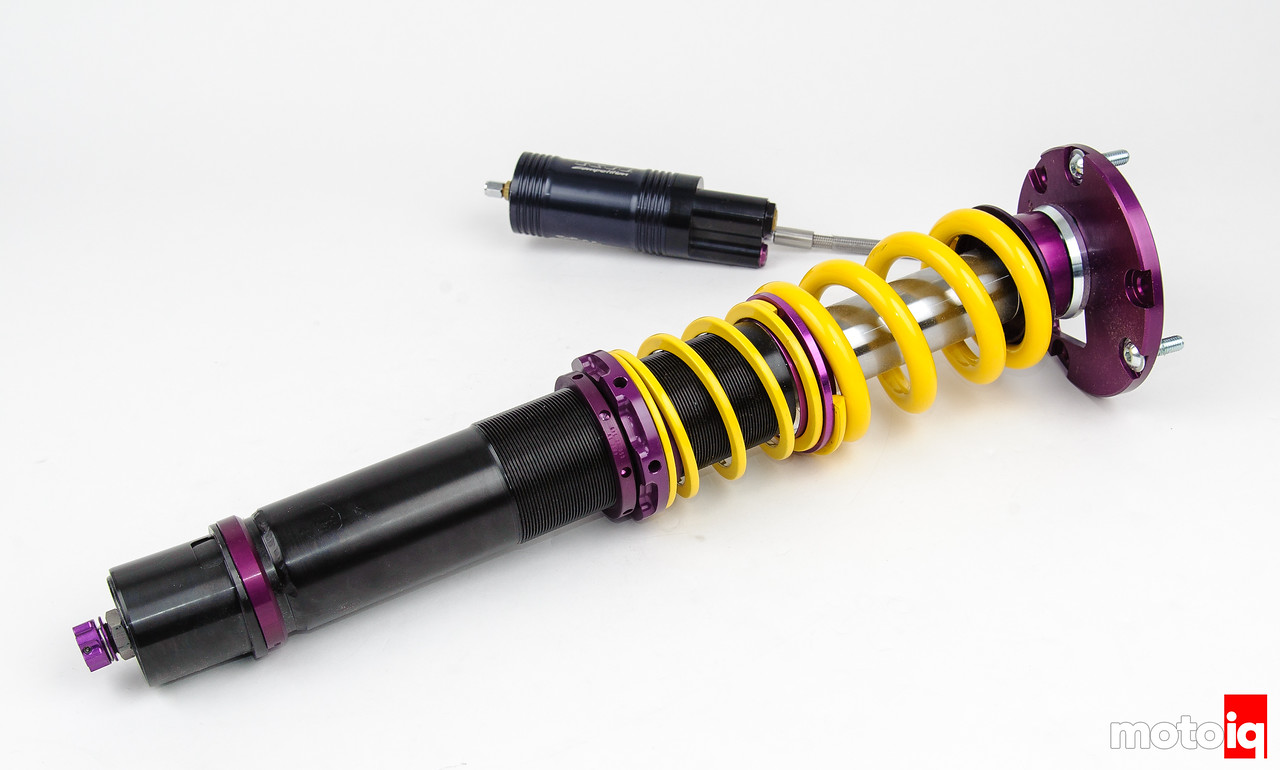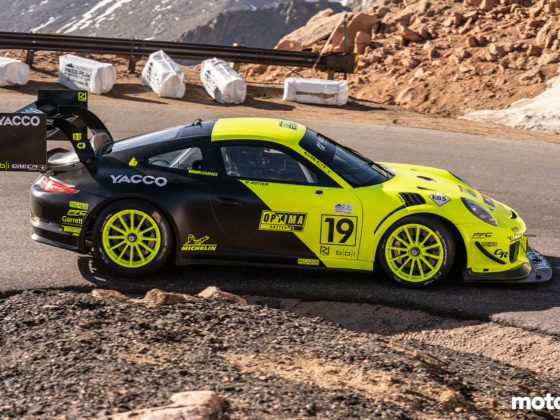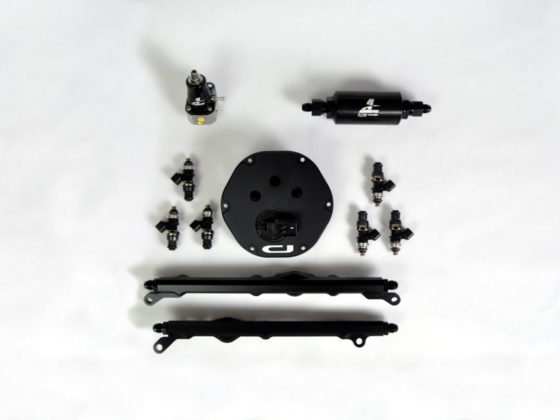
As a suspension guy, lately, I have been asked what is an inverted MacPherson strut a whole bunch of times. So I concluded that I had better write something about the subject! Basically a MacPherson strut suspension is a simple, inexpensive and lightweight independent suspension which has made it very popular with manufacturers. It is so popular that it is perhaps the most widely used front suspension in the automotive world at this time. Really the MacPherson strut only has three disadvantages. One, the amount of negative camber gain usually doesn’t keep up with the roll angle of the car so the suspension gains positive camber under roll, two the design usually requires a higher hood line and three, the stiffness of the front suspension relies solely on the skinny strut shaft which is under a lot of stress. This usually means that strut suspension is limited to economy cars although some expensive cars like BMW, Porsche, and Mercedes use MacPherson strut suspension.
The inverted shaft strut was developed to make the MacPherson strut stronger and more rigid. It is almost universally used for rally car suspension for this reason and a lot of ultra-high performance and race applications are inverted for these reasons as well. Some cars like the Evo, the STi, and some Porsche models are equipped with inverted shaft strut from the factory.

I stole this cute picture from Tein Suspension, the strut on the left is a conventional MacPherson strut and as you can see it is like a giant shock absorber with a body, a piston and a shaft with the shaft attaching to the body in the shock tower. Most of you have seen this sort of strut many times and are very familiar with it. The strut on the right is an inverted shaft. As you can see it is a strut but it is upside down and what is normally the body of the strut that bolts the steering knuckle is actually a case the encloses the shock body. The shock body itself looks like a giant thick shaft and it slides up and down inside the case. The shock shaft is actually inside this case tube and bolts to the bottom of it.

Here is what a standard shaft strut looks like on the right when compared to an inverted shaft strut on the right. You can see how the body of the shock, in blue, now appears to be the shaft and how it slides up and down inside the case, in red, with the tabs that bolt to the steering knuckle. You can see how in a conventional strut that skinny shaft supports the entire front suspension, braking loads and side loads which can be tremendously included. The flex messes up your handling and it can easily bend and break in hard use like rally.

So the big thick shock body is many times stiffer and stronger than the skinny conventional strut shaft and since the shock body slides up and down in two sets of bushings in the case, nearly all of the side loading is taken off the shaft, piston, and its bushings. As you can see here the bump stop is also inside the case. With the bind taken off the piston and shaft, there is a lot less stick in an inverted shaft strut so it allows the damper to work better although the two sets of extra bushings and an extra seal add some of that back.




5 comments
Could you do a post on Motio Ratio please. How it relates to Spring Rates as well.
Thanks I love Moro IQ
“…looks like a giant thick shaft and it slides up and down inside…” gonna need a NSFW stamp on this article.
Interested in a bit on the Ohlins DFV – actually really interested in how their implementation compares to the various Penske parallel valve ideas (digressive blowoff or regressive blowoff) I know Ohlins does good work but it doesn’t seem like they want to sell you the parts to build the more “advanced” versions of their stuff as easily. Also find it interesting how KW’s competition stuff is monotube, though not actually surprising.
Since the piston rod is thinner on the Inverted strut, would you be able to run lower gas pressures than a non-inverted strut?
Shaft diameter is irrelevant to gas pressure. It affects the valving more.